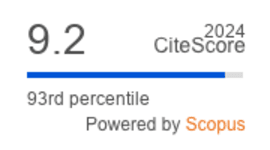Updates on the development of vaccines and therapeutic options against rabies
DOI:
https://doi.org/10.36877/pmmb.a0000100Abstract
Even though rabies has been claiming more than 50,000 deaths annually worldwide, it is considered as a vaccine-preventable viral disease. More than 95 % of the total human rabies cases are caused by dogs. During the initial stage of infection, affected individuals usually show weakess at the bitten extremities and the virus can ultimately travel to the brain causing neurological signs. In attenuated (inactivated) form, the currently in use vaccines have been recommended by WHO for the prevention (i.e. pre-exposure prophylaxis, PrEP) and treatment (i.e. post-exposure prophylaxis, PEP) regime against
the rabies virus (RABV). However, given that they normally require refrigeration and are costly, there have been discussions revolving around potential development of newer, safer and cheaper alternative that can perform better and more convenient than the ones that are currently in use. The current review aims to explore general characteristics of RABV before looking into potential candidates of vaccines that have been studied. Further studies on the pathogenic mechanism of RABV and therapeutic approaches are still required to prevent the deathly infection following clinical manifestation. In sum, integrated interventional strategy emphasizing human health and animal health is essential and requires collaboration between health authorities and the public.
Downloads
Published
How to Cite
Issue
Section
License
Copyright (c) 2020 Roshan Arjun Ananda, Hooi-Leng Ser, Vengadesh Letchumanan

This work is licensed under a Creative Commons Attribution-NonCommercial 4.0 International License.
Author(s) shall retain the copyright of their work and grant the Journal/Publisher right for the first publication with the work simultaneously licensed under:
Creative Commons Attribution-NonCommercial 4.0 International (CC BY-NC 4.0). This license allows for the copying, distribution and transmission of the work, provided the correct attribution of the original creator is stated. Adaptation and remixing are also permitted.

This broad license intends to facilitate free access to, as well as the unrestricted reuse of, original works of all types for non-commercial purposes.
The author(s) permits HH Publisher to publish this article that has not been submitted elsewhere.



.png)

.jpg)
